Dressmaking materials exist in many forms, with dress styles being virtually endless.
Fabrics are either woven or knit and may be made from animal fibers (wool and silk), plant fibers (such as cotton and linen), or man-made fibers (nylon). Knitted fabrics are more flexible than those that have been woven.
With over 18 years of experience in garment manufacturing, I’m so excited to talk about fabric recommendations for dresses. When choosing the perfect material for a dress, consider a few things. Keep reading to find out what those are and get some advice on the best fabrics for your style!
A quick-start guide to fabric
There isn’t enough room in this space to go through every material, so I’ll just mention a few of the most popular ones:
- Cotton – Woven cotton is the most adaptable cloth, with a wide range of weights available from lightweight handkerchiefs to heavy canvas. It’s frequently utilized for clothing, especially shirts, dresses, pants, jeans, and backpacks. Cotton is the most frequent material used in denim jackets and jeans. Price range – on average, relatively cheap.
- Cotton jersey/knit – This fabric, woven by machine from fine cotton thread, is what t-shirts are made of. It’s stretchy and pleasant to wear, but it’s not as simple to sew as woven fabric.
- Linen – Linen is a versatile and comfortable fabric that comes in a range of weights. It wrinkles easily and is commonly combined with cotton. Its most common application is for summer attire. It may be pretty costly.
- Silk – Silk is a lustrous, slippery woven fabric frequently used in high-end underwear, blouses, and dresses. It’s expensive to make and difficult to do.
- Wool – Wool may be woven or knitted. Woolen textiles are commonly used in clothes, such as suits, coats, and expensive skirts and trousers. They tend to be pricey and must be dry cleaned frequently.
- Polyester and polycotton – Polyester and polycotton are man-made fabrics created by weaving synthetic fibers together. Polycotton is a combination of polyester and cotton. It’s often quite affordable.
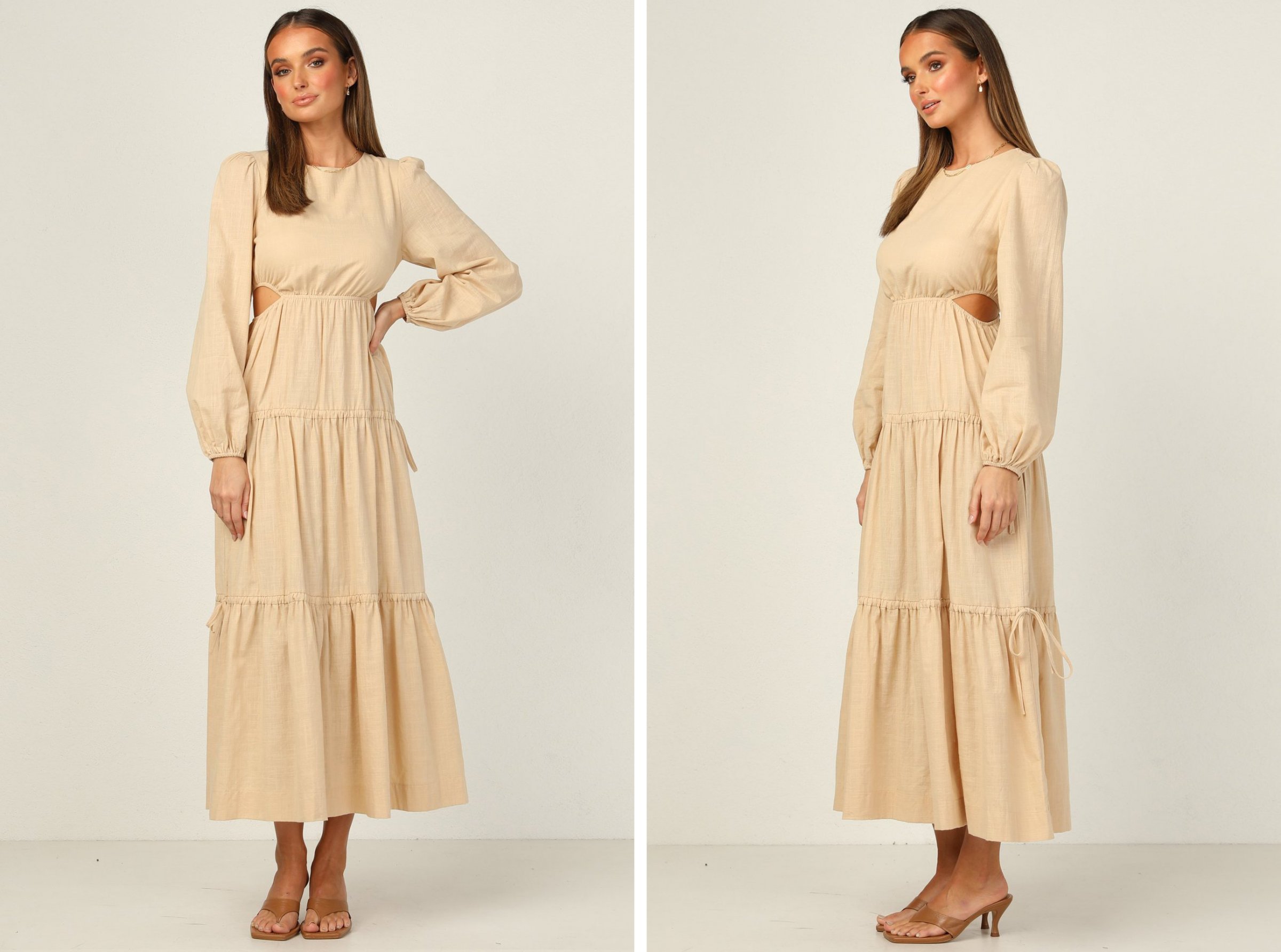
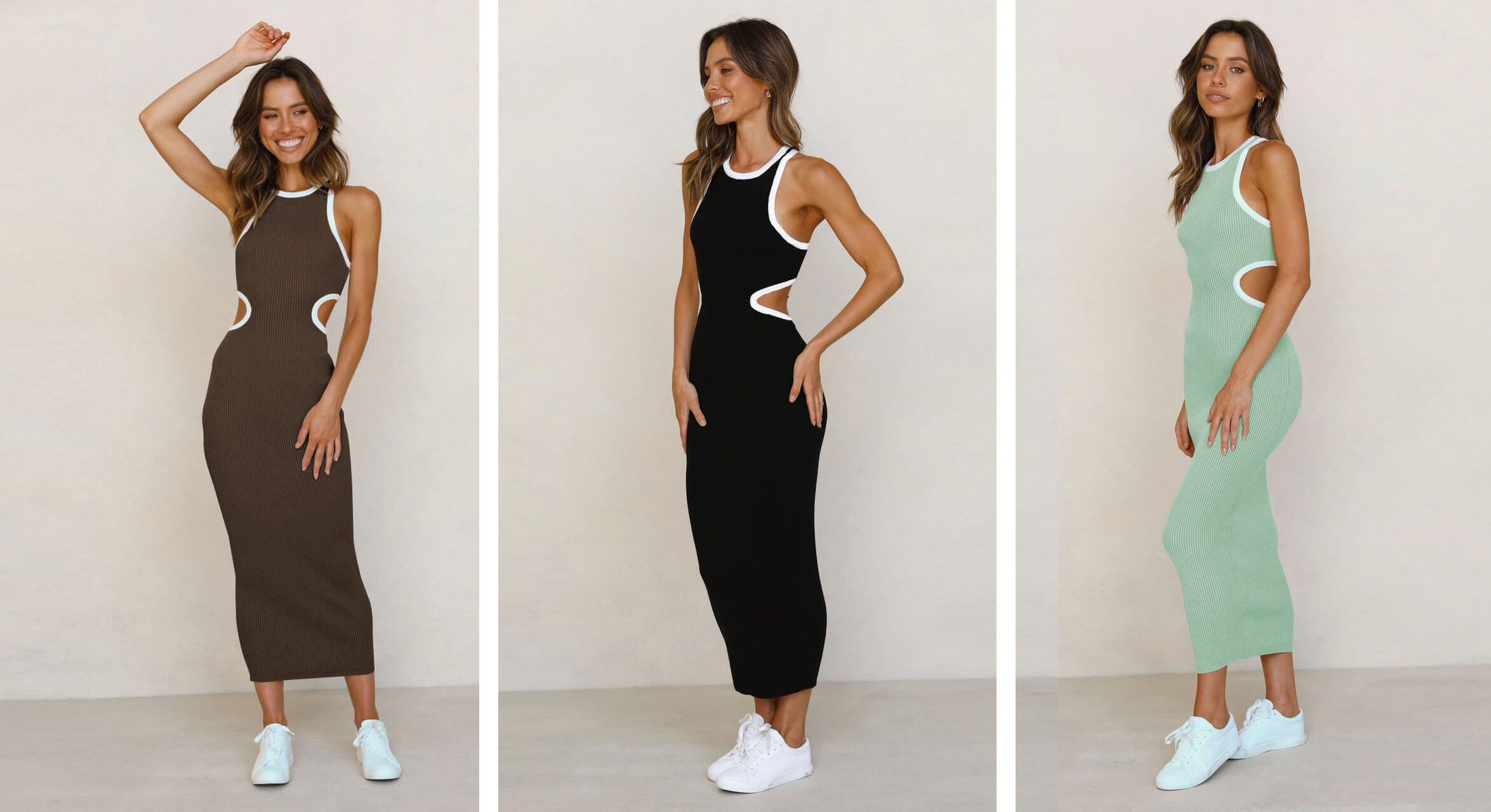
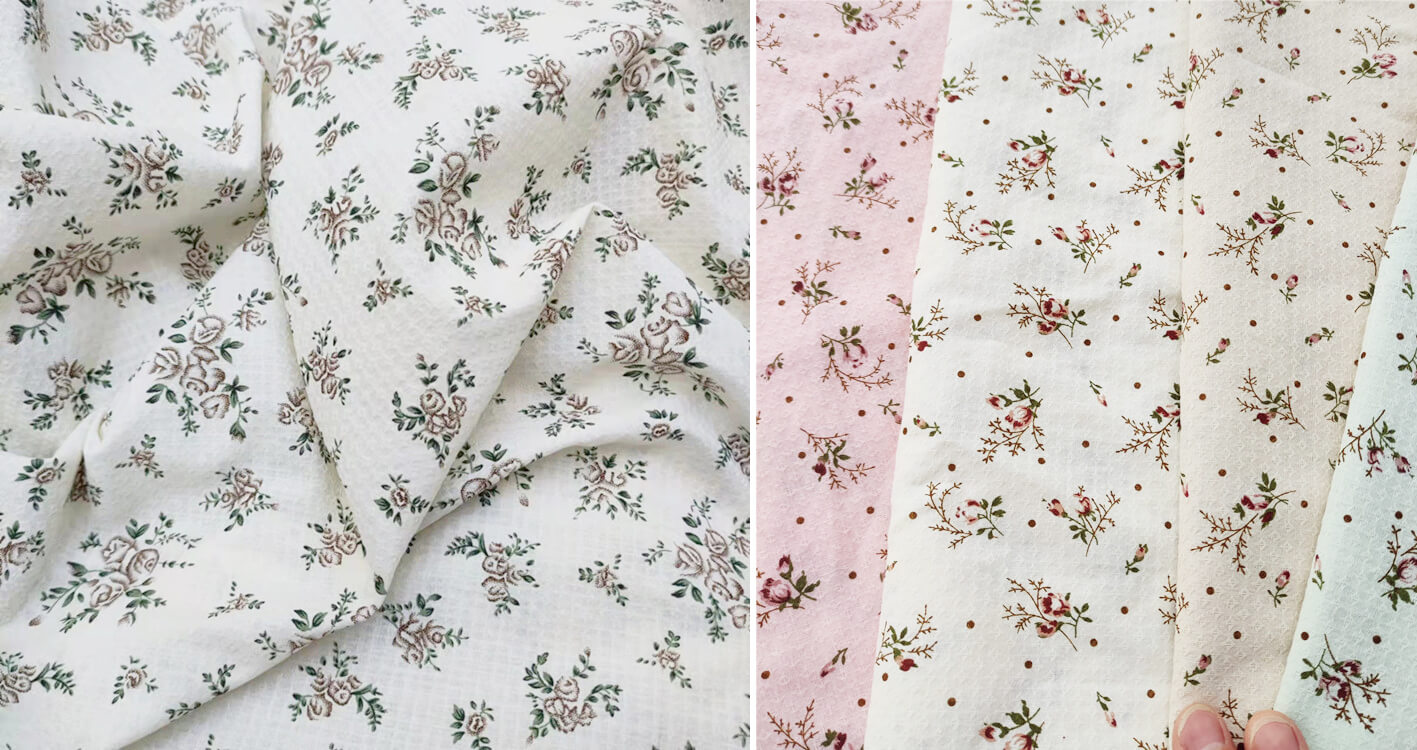
What Should I Look For When Shopping for Clothing Fabric?
This is the list/questionnaire to use before selecting a fabric:
1. What is the purpose of your dress? Where will you use it?
What is the difference between a gown and a dress? This may be difficult to answer without first understanding what each term entails. Knowing the distinctions will assist you in determining several specifics. You establish a particular framework for fabric choice at this stage, including fabric style and the intended use of your dress. Consider such factors as drape, stretch, and durability when deciding whether or not such items are appropriate for you.
You take only that fabric collection that satisfies the most fundamental criteria, just as Michelangelo Buonarotti, who created magnificent sculptures by “chipping away at everything that doesn’t fit the vision.”
2. When will you use it?
The first assumption we make is that when it’s warm outside, we should wear cotton or linen dresses, and when it’s cold, worsted wool is the best choice.
At the same time, winter provides a fantastic chance to show off your refined taste with high-end textiles such as alpaca, cashmere, and even silk! Cashmere, alpaca, and worsted wool may be easily distinguished by sewers. Others might not be as aware. These illustrious wools are usually warmer, softer, and lighter than merino wool. Just what you need to make a luxury statement!
In addition, the fabric’s texture is significant. It might be difficult to pick between smooth worsted or fluffier woollen wool cloth for a colder season since both are so appealing. While woollen wool may appear super cosy, remember that it pills easily.
As for silk, it may be worn all year if your position falls between the 50th parallels. The key to its versatility is the considerable length of silk fiber, which can reach up to one mile (1609.344 meters)! Because of its long-distance, silk allows for very close weaves like satin, making it an excellent heat retention material. When sweat evaporates, silk serves as a sweat absorber and provides a unique cooling sensation.
3. What will the finished dress look like?
The softer and thinner your chosen cloth should be, the more complex your intended dress design is. If you want to create a lot of folds, drapes, and ruffles, use silk chiffon or silk crepe fabrics. Choose a material that contains elastane if you’re planning on making an empire waist dress. If the features of your body are not precisely what you wish to show off, taffeta is an option.
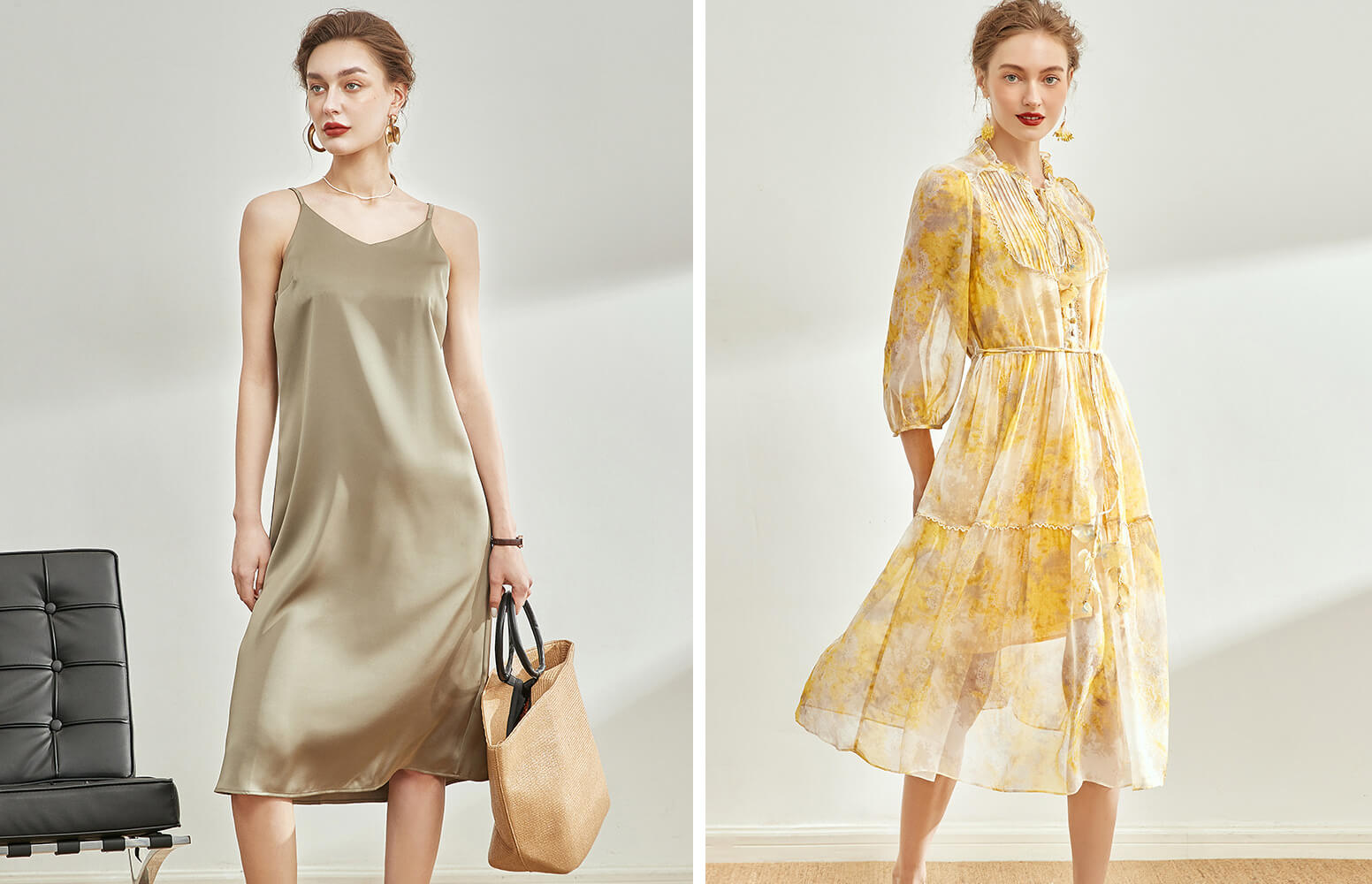
4. Colour and prints.
Suits in solid fabric look particularly lovely with many decorations, such as folds, pockets, and tassels. Go ahead if you want to use single-toned hues for evening and cocktail dresses.
When it comes to casual dresses for dates and leisure activities, they look best with patterned designs that are geometric, floral, or botanical. Don’t forget about the famous Paisley one, which appears to be ageless. It has been a trademark of the Italian brand Etro since the early 1980s and is referred to as ‘buta’ in the East.
If you’re a fan of check patterns, keep in mind that small and medium checks suit any form, while more extensive checks are best suited to tall and thin ladies.
Your summer wardrobe should be more vibrant, while fall and winter clothing appear better in darker hues.
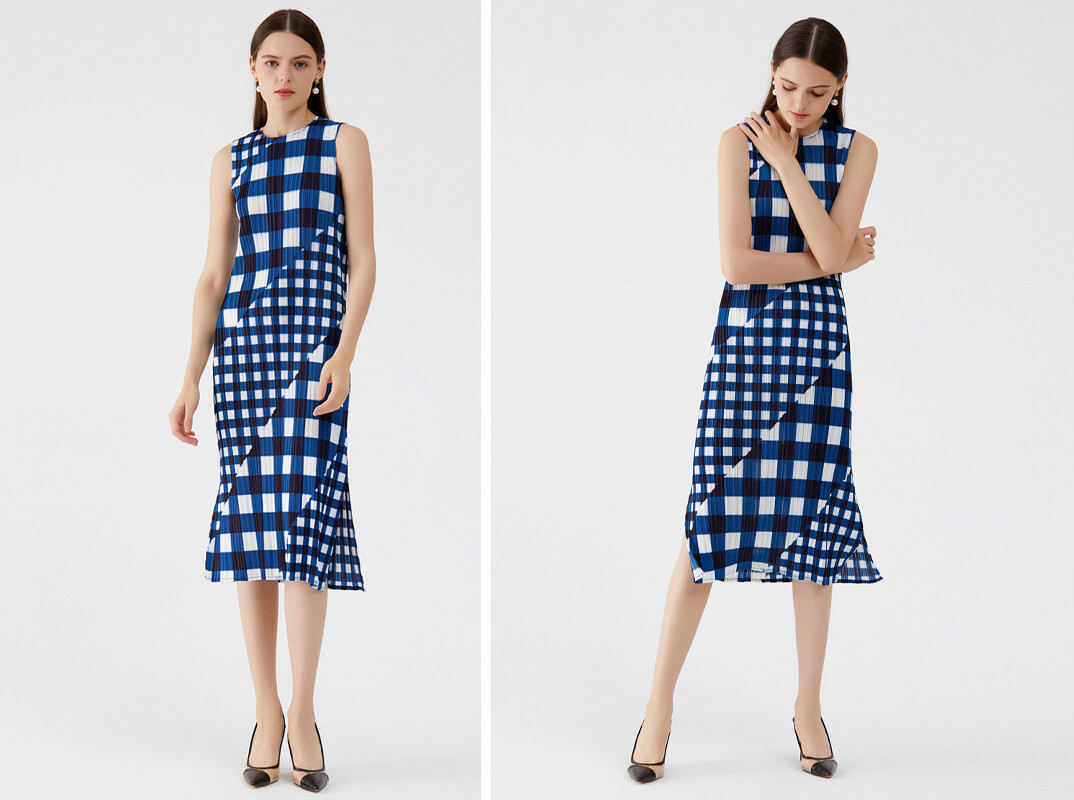
5. Is it suitable for your body type?
Unfortunately, no dressmaking fabric looks lovely on all women. However, it does not imply that specific shapes cannot look stunning. All you have to do now is pick the right texture, hues, and patterns; there are plenty of options!
For example, textured materials such as tweed or boucle might not suit women with a fragile body type because they need medium-weight materials. Satin, lustrous, or leather textiles are never wrong for skinny ladies since they enhance your figure and make it rounder visually.
Shorter ladies should avoid big designs and stick to monochrome, while the taller ones… Right now, you may want it to be presented in a clear and straightforward style. We’ve put up the following table if you have any questions about it.
6. Women’s body types with pieces of advice on dressmaking fabric selection.
tall
- Avoid huge hemlines, choose maxi-maxi skirts;
- Feel free to use as many patterns and designs as you like.
- Avoid using monochromatic fabric designs.
- Choose hourglass shapes with a high waist or a waist-cinching belt;
- Wear skirts that fall above the knee.
short
- Consider buttoned shirt dresses;
- Vertical lines will make you appear taller, but the horizontal ones are best avoided;
- Complement your clothing with an open straight jacket or a cardigan;
- V-line tops elongate your appearance visually.
skinny
- Choose a dress with horizontal stripes;
- Use sturdy textiles like organdy or taffeta;
- Consider wearing slightly loose but fitting clothes with your gown;
- Don’t use clingy fabrics;
- Be wary of overly baggy designs; Avoid being completely covered in black.
heavy
- Although it’s fashionable, avoid wearing clingy clothing that will accentuate your figure flaws;
- Many colors are another no-no;
- Darker tones are more popular than lighter ones
- If you enjoy vertical lines, go for it! Your figure adores this design.
- Make a long dress to elongate your legs.
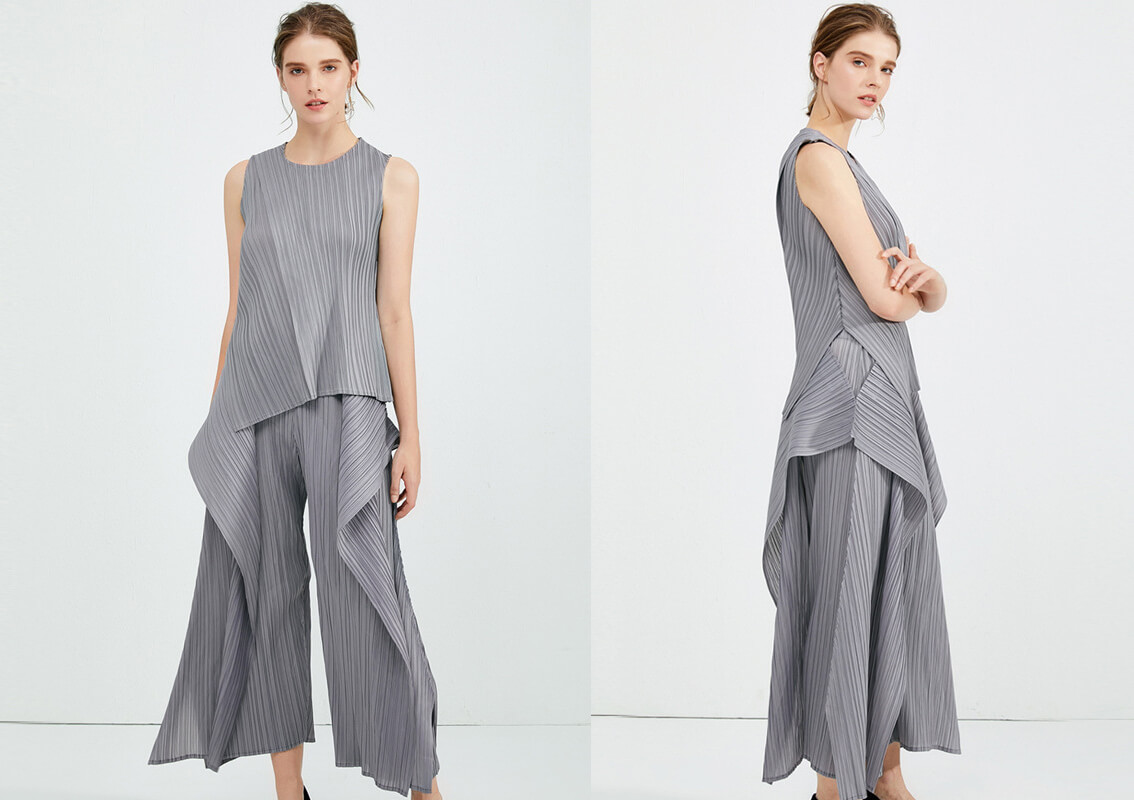
7. Are you competent enough to deal with this cloth?
You may have already eliminated a lot of options at this stage. If your chosen fabric is challenging to sew, consider hiring someone to help you out.
Cotton fabrics are one of the simplest for a novice dressmaker to work with, so use that as your guide. You won’t have to match them because they’ll be stripped or chequered, making it much easier for you – isn’t it?
Cotton is an excellent fabric for both formal and informal wear. It’s breathable, lightweight, durable, and easy to maintain.
You may also choose from natural fabrics like linen or cotton-linen blend. Whatever appeals to you, regardless of how tempting it seems, avoid selecting stretchy, slippery, heavy, rigid, or bumpy materials at the start of your stitching journey.
As you get more experienced, you’ll be able to create more complex clothing from any of your selected materials.
8. How much fabric do you need?
If you outsource the construction process to an atelier, this should merely worry you in financial terms — the experts will follow precise dimensions. If you do it yourself, consider these issues as shown below:
Dress design
Sleeves, collars, ruches, flounces, frills, peplums, wedges, and other asymmetric embellishments require an additional 0.2-0.3 cm of fabric. If such features are intended to be volumetric, you may need to add more cloth for them.
If you have a waistline, it’s time to consider whether your dress will have a waistline or not. There is no purpose in purchasing two lengths of cloth for the top of the bottom to be sewn separately; instead, leave more material for the skirt portion.
Fabric characteristics
If you cut a garment from a patterned fabric, the final length of the cloth may be longer than half a meter to match the pattern. There’s no benefit in hoping that your mistake will go unnoticed in your situation — it is apparent, and all of your money will be paid off…
Your shape
This part is tricky. If your figure resembles a basic one, you can make average measurements without difficulty. Simply take one length of fabric and add 20-30 cm to the end cuts and hems to ensure that everything fits appropriately. Some ladies have wider hips than shoulders, which means less cloth is required for a top but more for a skirt. When this happens, it is suggested that you buy fabrics in two measures plus extra to finish the hem and cuts.
Wrapping up
Now that you have all of this information, it’s time to select the perfect fabric for your dream dress! The most important thing to remember is that your chosen material should reflect your own unique style.
If you have any questions, please do not hesitate to contact us.
We have more than 18 years of garment industry expertise available for you!
